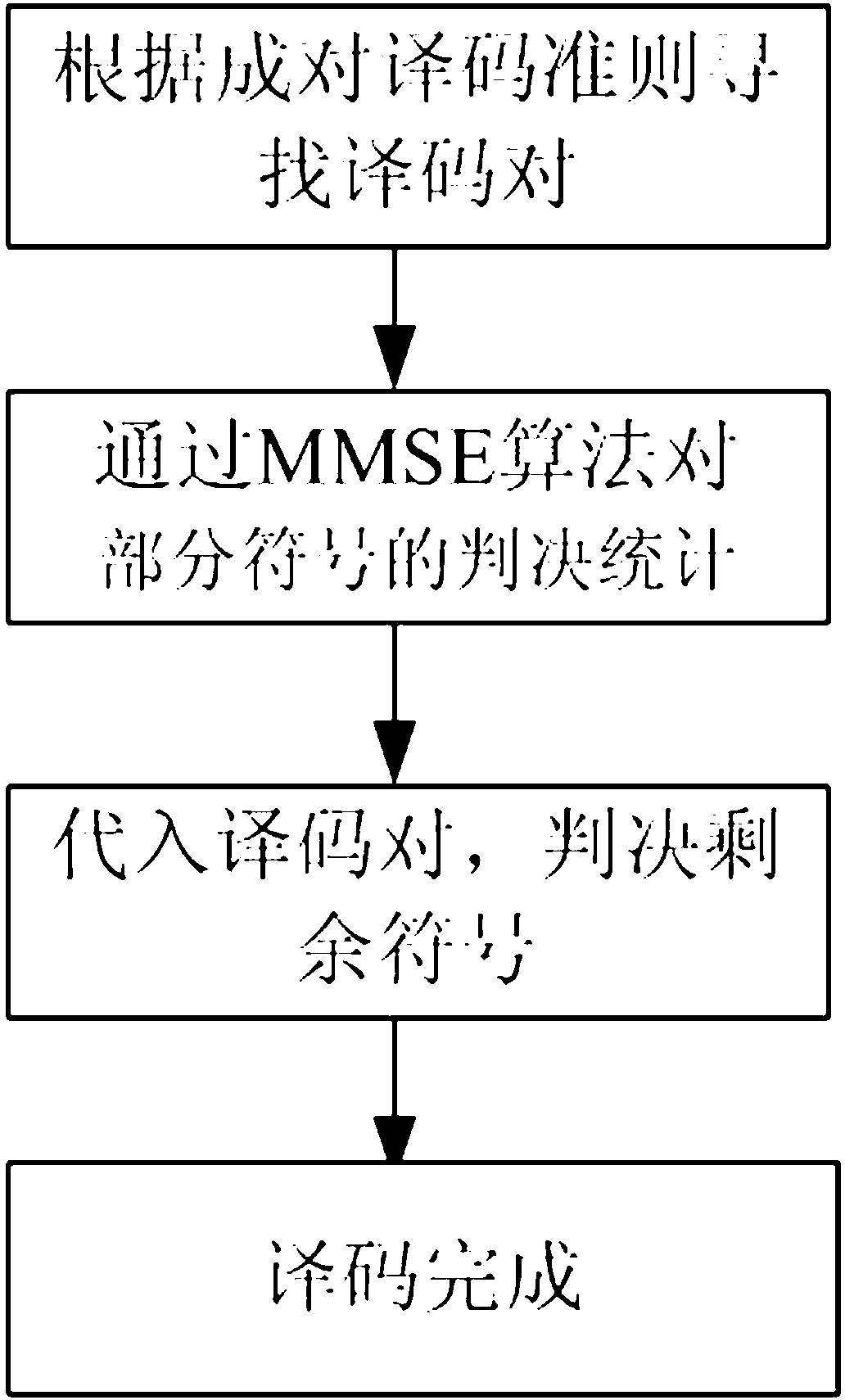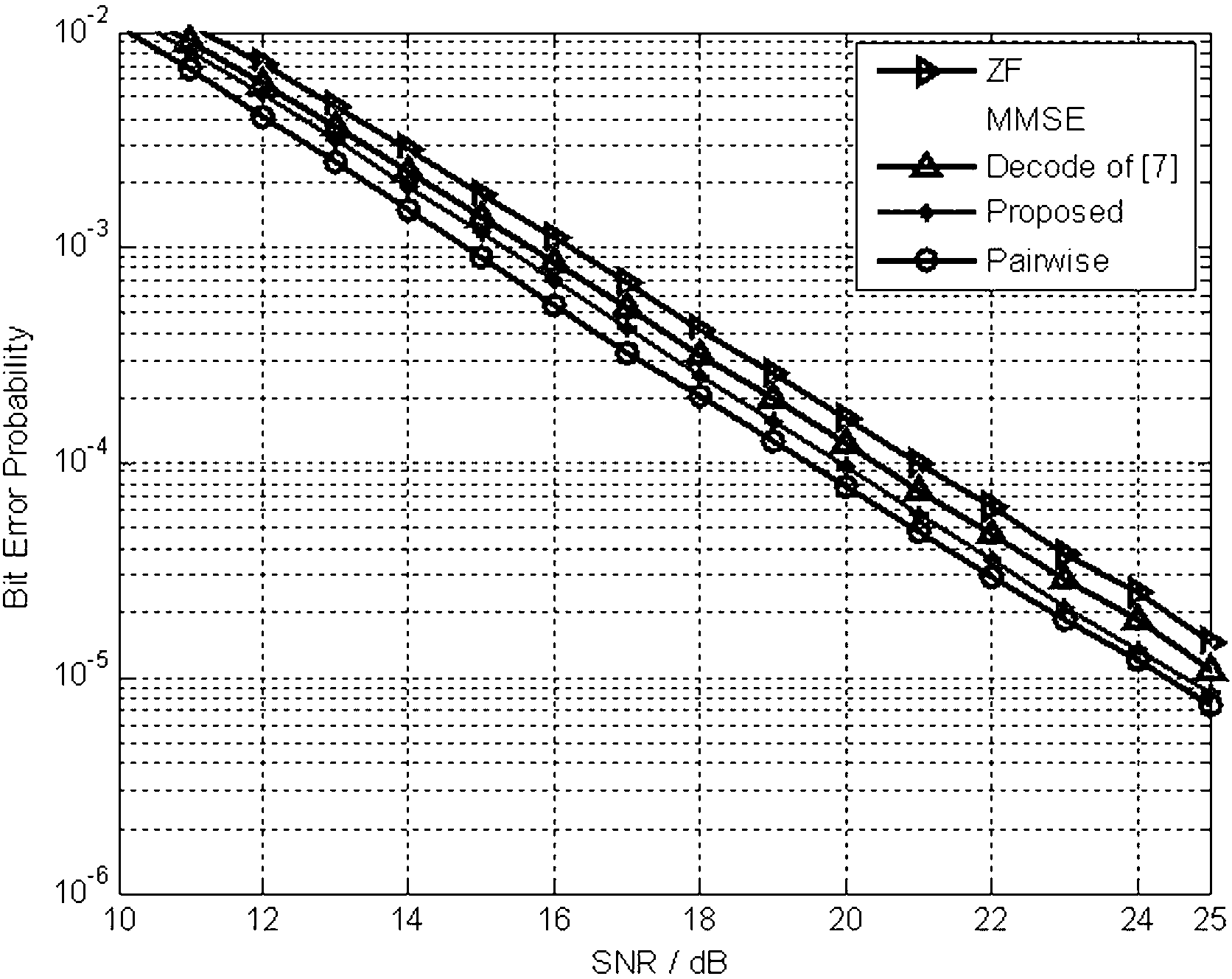Low complexity decoding method of quasi-orthogonal space-time block codes
A space-time grouping, quasi-orthogonal technology, applied in the direction of preventing/detecting errors through diversity reception, to achieve the effect of reducing complexity
- Summary
- Abstract
- Description
- Claims
- Application Information
AI Technical Summary
Problems solved by technology
Method used
Image
Examples
Embodiment Construction
[0029] The specific implementation of the present invention will be described in detail below mainly in conjunction with the accompanying drawings.
[0030] like figure 1 and 2 As shown, for a wireless communication system with N transmitting antennas and M receiving antennas in the space-time block code, the number of transmitting time slots is T. The received signal vector is expressed as , where is the channel gain vector between the transmit antenna and the receive antenna, the element ( ) is a sampling of independent and identically distributed complex Gaussian random variables; Yes Dimensional transmit codeword matrix; is the noise vector, element ( ) is independent and identically distributed complex Gaussian random noise.
[0031] Taking a quasi-orthogonal space-time block code (Q-OSTBC) with four transmit antennas as an example,
[0032]
[0033] in . here and Yes and The power scaling of , where Yes N The total transmit power of...
PUM
 Login to View More
Login to View More Abstract
Description
Claims
Application Information
 Login to View More
Login to View More - R&D
- Intellectual Property
- Life Sciences
- Materials
- Tech Scout
- Unparalleled Data Quality
- Higher Quality Content
- 60% Fewer Hallucinations
Browse by: Latest US Patents, China's latest patents, Technical Efficacy Thesaurus, Application Domain, Technology Topic, Popular Technical Reports.
© 2025 PatSnap. All rights reserved.Legal|Privacy policy|Modern Slavery Act Transparency Statement|Sitemap|About US| Contact US: help@patsnap.com



